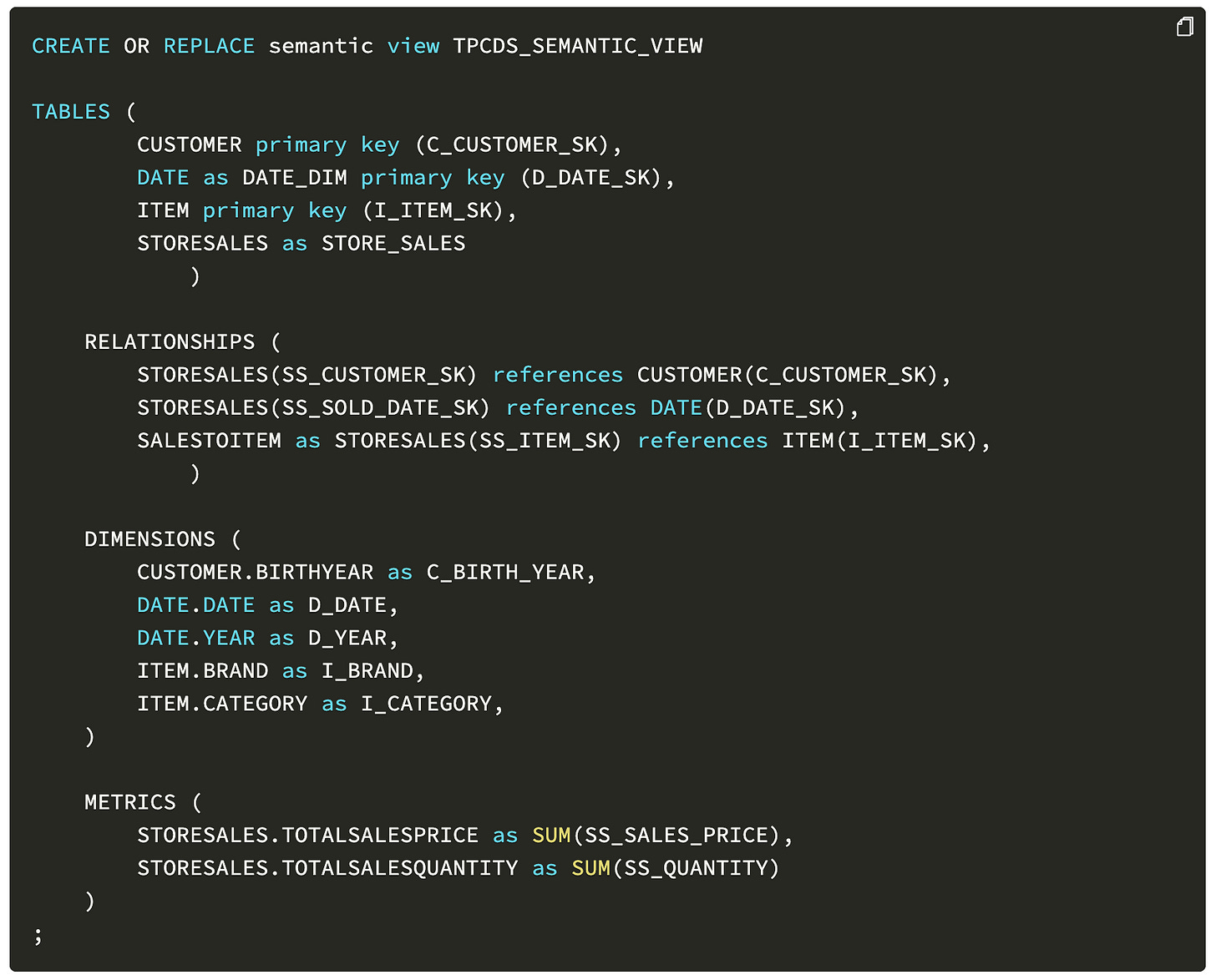IN or OUT: Should Semantics Be IN or OUT of Your Database?
The Semantic Layer Showdown
Semantic layers have become a crucial component of modern software architecture. But, where do you store them? Should they be embedded in your database? Maintained in your BI tool? Or should you have an independent universal semantic layer for all your tools, including AI agents?
This isn't just a technical decision—it's a philosophical showdown that could reshape enterprise architecture for years to come. Let’s explore two sides of this debate.
POINT: Semantic Layers Should Be in Your Database (or BI Tool)
Josh Klahr from Snowflake argues that semantic definitions should be stored as first-class database objects, like database tables and views, rather than in external files and configurations. At the 2025 Semantic Layer Summit, he explained how Snowflake’s approach “improves consistency, security, shareability, and integration.”
Tableau Semantics does the same thing. Power BI does the same thing. Google Looker does the same thing.
Conventional Wisdom Challenged: Embedding semantics in a tool challenges the notion that semantic meaning should unify all tools, databases, large language models (LLMs), and applications within an enterprise.
Six-Word Story: "Embed semantics in Snowflake, not elsewhere."
Example: Snowflake semantic views help developers create database objects like a "Revenue" metric that can be accessed by any authorized application (Tableau, Power BI, or custom applications) with the same definition, permissions, and lineage information, eliminating the need for each BI tool to maintain its own semantic layer with potentially conflicting definitions.

Making semantics database-native aims to centralize data meaning close to the data source, leveraging the database's security and object management capabilities for better governance and consistency.
Further Exploration: Check out more from Snowflake's native semantic views.
COUNTERPOINT: Semantic Layers Should NOT Be in Your Database
Embedding semantics in databases and BI tools proliferates multiple, contradictory semantic layers across an organization, exacerbating the very problem they’re meant to solve: inconsistent definitions and multiple versions of the truth. According to Chris Lynch, CEO of Atscale, “Embedding semantics in the data platform is a fundamentally flawed idea and is “almost as bad as coupling it to a BI tool, as Power BI does.”
"A semantic layer must be universal or don’t bother!”
Conventional Wisdom Challenged: Contradicts the trend of database and BI vendors embedding semantic capabilities in their platforms, arguing for independence rather than vendor lock-in and “detached islands of data meaning.”
(Seven) Word Story: "Universal semantic layers build bridges, not walls."
Example: A multinational corporation utilized Snowflake for its financial data, Databricks for its marketing analytics, Microsoft Fabric for its operational data, Tableau, Power BI, and Spotfire. Each platform has a native semantic layer with different definitions of "customer" and "revenue." When executives compared reports across departments, they got conflicting insights and spent weeks reconciling the differences. Ultimately, they realized they needed a platform-independent semantic layer to establish a single source of truth.
Semantic Layer Solution: An independent, universal semantic layer that sits above all data platforms and BI tools provides consistent definitions and metrics regardless of where data is stored or how it's consumed, including for AI. This ensures that all users, applications, and AI agents work with the same business logic, regardless of the underlying technology stack.
The semantic layer debate ultimately reflects a deeper tension in data architecture: the trade-off between platform optimization and universal flexibility.
Snowflake's database-native approach offers compelling advantages in governance, security, and performance, making it an attractive choice for organizations heavily invested in a single data platform.
Universal semantic layer advocates argue that independence is the whole point of sharing semantics. The idea is to scale meaning, not trap it in one place, creating vendor lock-in and the proliferation of competing definitions across heterogeneous environments.
What's certain is that doing nothing—allowing semantic chaos to persist—is no longer an option. The key is making a deliberate choice and committing to the discipline required to make it work. Ultimately, the best semantic layer is the one you’ll use.
Further Exploration: Check out Chris Lynch on embedded Semantic Layers
21 Big Ideas from the 2025 Semantic Data Summit
This post is a part of a multi-part series on big ideas from the 2025 Semantic Data Layer Summit. It explores hot takes on topics like: Is data visualization dying, or is it just getting started? How can AI best leverage “real” data to ensure its insights are accurate? What role do data semantics play in the agentic automation applications of today and tomorrow?






Thanks Mark for such good arguments !
My perspective is not different which I article below and would love to hear your point of view.
https://open.substack.com/pub/naveenkumarai/p/convergence-of-semantic-layer-with?utm_source=share&utm_medium=android&r=5xjsca